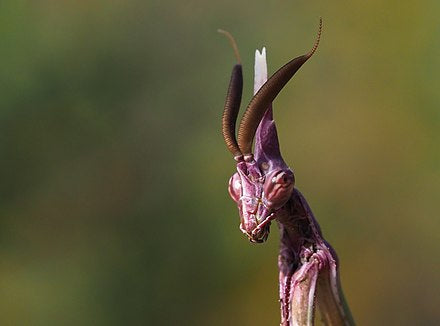



Sold out
Empusa pennata Conehead praying mantis
$42.00
Empusa pennata, or the conehead mantis, is a species of praying mantis in genus Empusa native to the Mediterranean Region. It can be found in Portugal, Spain, southern France, Italy and on the mediterranean coasts of Morocco, Algeria, Tunisia, Libya and Egypt.
Empusa pennata generally has a large, thin body with a low mass, as well as a large pair of wings used for flight. They are mostly found in perennial herbs and scrubs. There are three ways for these insects to find mates: chemical, acoustic, and visual signals. Some predatory insects like mantids rely on cryptic colouration; they use this camouflage to protect themselves from predators and capture prey.
This species of mantis, although similar in size to the common European mantis (Mantis religiosa), is easily distinguished by the protrusion from its crown. Both males and females possess this tall extension from birth, giving them a very 'alien' appearance.
They live in dry, warm environments and use their cryptic colouring of either greens and pinks or various shades of brown to keep hidden from predators. Females may grow to a length of 10 cm, while males are shorter and slimmer. Males have distinctive ‘feather’-type antennae. Empusa pennata overwinters as a nymph and reaches the adult stage by spring. Its eggs develop quickly, especially in the summer months.




